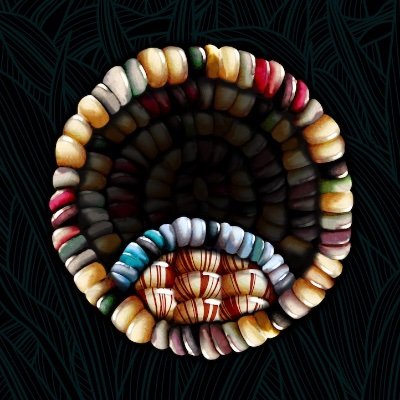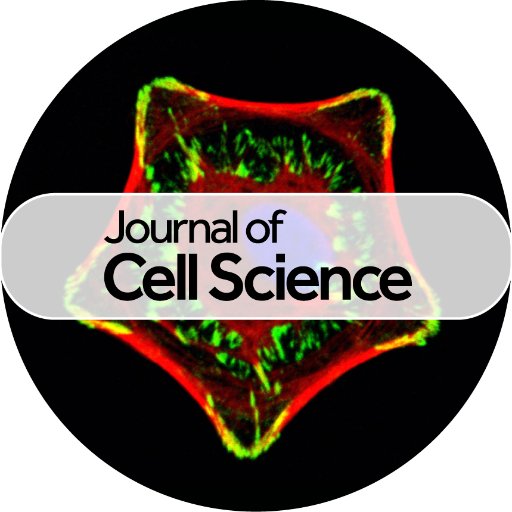
Maria Christophorou
@MAChristoLab
Followers
997
Following
4K
Media
49
Statuses
999
PI in #Epigenetics. Fascinated by how stem cells work and how our genes make us. Can’t wait to find out what #citrullination is all about. Own views. She/her.
Cambridge, UK
Joined January 2020
Our new #preprint by @phdanmoore has: ✅ A KRAB Zinc Finger (the SCAN domain-containing kind) ✅ #transposon sequences (the SINE kind) ✅ #epigenetic regulation (the #enhancer kind) ✅ lineage specification (the neural kind) ❌ and NO heterochromatin! https://t.co/jma5iaqFMU
biorxiv.org
Gene cis -regulatory sequences are increasingly recognised as containing “domesticated” transposable elements that impact their function. The KRAB Zinc Finger Protein (KZFP) family of transcription...
1
3
13
1
0
1
Daniel drove and executed this work during his 4-year PhD. It's a bit difficult to convey how impressed I've been! 🚀🚀 So congratulations to him and thank you to our collaborators Eugenia Wong, @stefanschoenfe1, @mikhailspivakov and @simon_andrews.
1
0
1
It also suggests a molecular mechanisms that may underlie the genetic association between ZKSCAN3 and #schizophrenia.
1
0
0
Our work therefore identifies a #KZFP that regulates #enhancer function through targeting domesticated #transposon sequences and operates in a #heterochromatin independent manner.
1
0
0
Single cell RNA-seq after acute depletion of ZKSCAN3 during multi-lineage differentiation of ES cells shows that ZKSCAN3 operates during neural specification and mediates proper expression of dose-sensitive lineage commitment genes essential for wiring of the developing brain.
1
0
0
#KZFPs typically regulate through establishment of #heterochromatin, through interactions with KAP1/Trim28. However: - ZKSCAN3 doesn't bind KAP1 - ZKSCAN3 modulation does not affect H3K9me3 - The KRAB-deletion mutant rescues ZKSCAN3 function as well as the wild-type.
1
0
0
#KZFPs consist the largest family of transcription factors in most mammals and are well known for keeping #transposons in check. Here, we found that ZKSCAN3 targets #enhancers containing 'domesticated' #transposons and suppresses their accessibility and function.
1
0
0
ZKSCAN3 belongs to a sub-family of #KZFPs that contain a poorly characterised SCAN domain. It is of particular interest as it exhibits strong genetic association with #schizophrenia risk.
1
0
0
In this work, Daniel genetically targeted mouse embryonic stem cells to knock in degron and epitope tags to the endogenous Zkscan3 locus. This allowed him to manipulate and track this enigmatic #KZFP to understand its genomic localisation, mechanism of action and function.
1
0
0
Many congratulations Chien-Yun and team! Great to see this out. 🚀 Prosit-Cit is an important addition to the community’s toolkit for studying #citrullination
Kicking off the new year strong! 🚀 Prosit-Cit is officially online on MCP! Check it out: https://t.co/zfy8FCWN1A Follow us on Bluesky for more exciting research updates! @
0
0
1
We are hiring! 3-year BBSRC-funded postdoc position available. TEs, epigenetics, pregnancy: if you love one or more of these keywords, apply through the link below. Please spread the word. https://t.co/MqCWV429ct
0
39
45
Thank you @J_Cell_Sci for giving us the opportunity to write this article. We thoroughly enjoyed it!
Fantastic proteins and where to find them – histones, in the nucleus and beyond Johanna Grinat, Noah Shriever and @MAChristolab discuss the evolution & mechanisms of chromatin externalisation and (patho)physiological functions of extracellular histones. https://t.co/agYTamluBb
0
4
17
Faculty jobs going in Cambridge Biochemistry!! Assistant Professor/Associate Professor in the area of Bioenergetics or Microbiology @Cambridge_Uni
1
8
12
This has been one of the most enjoyable pieces of work I have ever undertaken. There is something so wonderful about becoming immersed in academic work – reading, thinking, discussing, writing. Thank you to @J_Cell_Sci for prompting us to put other things aside and focus on it!
0
0
2
With many thanks to @J_Cell_Sci, @Co_Biologists and @seemasainson for inviting us to write this article and congratulations to co-first authors, PhD student Noah Shriever and postdoc @JohannaGrinat. https://t.co/7tRdIJ1cro
journals.biologists.com
Summary: We discuss the evolution and mechanisms of chromatin externalisation and (patho)physiological functions of extracellular histones, including a perspective on their potential to act as...
1
0
1
We drew knowledge and inspiration from the work of Arturo Zychlinsky, @VeniPap, @HarmitMalik, Steven Henikoff, @VashKurdistani, @KirmizisLab, Denisa Wagner, @kmartinod, Li Yang, @megeblad, Anne Brüstle and many others.
2
1
1
Most excitingly, we discuss current evidence in support of the idea that #histones have yet unknown cell biological functions outside the cell.
1
0
0
In this Review article, we discuss the "non-canonical" locations and (path)physiological functions of #histones, the known mechanisms of their release from the nucleus and the cell and the known mechanisms through which they are sensed by other cells.
1
0
0
Most notably, #histones have important roles in #immune defence as highly potent #antimicrobial agents. In fact, release of extracellular #chromatin is nearly as ancient and widespread as chromatin itself.
1
0
0






